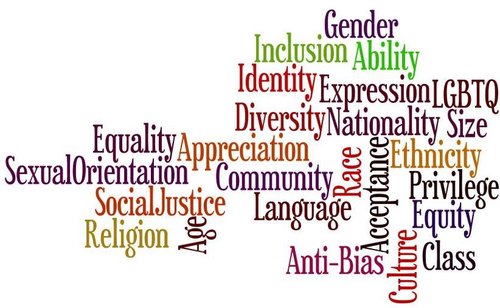Potter College News
Six Resources to Teach Students about Diversity and Inclusion in the Classroom
- Delaney Holt
- Friday, June 19th, 2020

Delaney Holt graduated from WKU Summa Cum Laude in 2019 with a B.A. in Literature and Teaching for Secondary Teachers. She is a pursuing her M.A. in Literature at WKU. This story is part of the WKU English Department’s ongoing initiative to provide diversity, equity, and inclusion classroom resources.
Six Resources to Teach Students about Diversity and Inclusion in the Classroom
by Delaney Holt
In her article “Mirrors, Windows, and Sliding Glass Doors,” Dr. Rudine Sims Bishop explains that books are either “mirrors” or “windows.” Sometimes, you’ll pick up a book and immediately relate to the characters and experiences, seeing a mirror image of yourself and your day-to-day life. Other times, you’ll pick up a book and be transported into an unfamiliar world, peering out a window to experience a new culture—a new perspective. When you read widely and diversely, you are able to unlatch a “sliding glass door,” opening a line of communication into the diverse human experience.
As an English teacher, I have a responsibility to intentionally curate a diverse, multicultural classroom library, making sure to strike a balance between the number of “mirrors” and “windows” available on my shelves. Dr. Sims Bishop explains that “when children cannot find themselves reflected in the books they read, or when the images they see are distorted, negative, or laughable, they learn a powerful lesson about how they are devalued in the society of which they are a part.” As a result, I need to make sure that multicultural literature is easily accessible, for every student has the right to open a book to a relatable mirror waving back. And, above all, I need to ensure that my classroom reading material is free from harmful or cliché stereotypes, containing a variety of material not written about persons of color, but written by persons of color.
To curate the strongest classroom library, a teacher has two responsibilities: 1) research and 2) read widely. Whenever I’m in a local bookstore, contemplating my next summer reads, I am aware that I need to step back, check my privilege and biases, and choose a variety of well-researched reading materials. I cannot direct my students toward their “mirrors” if I have no knowledge of the books that I am recommending or providing. Therefore, I have used a variety of resources to create my “to read” checklist, and I have included some of those links in this post.
As we work toward systemic change, we need to normalize multicultural literature in all aspects of our classrooms, our personal reading lists, and our lives. Uncover those mirrors, and throw those windows open. Embrace humanity page by page.
Resources:
Nic Stone, acclaimed author of Dear Martin, comments on the importance of “mirror” material for all students, offering suggestions for Black-authored additions to classroom and personal shelves: https://www.cosmopolitan.com/entertainment/books/a32770951/read-black-books-nic-stone/
Want advice on how to audit and shift your current classroom library? Read the following article: https://www.edutopia.org/article/creating-diverse-classroom-library
Looking to begin building a multicultural classroom or personal library? Visit the “We Need Diverse Books” (WNDB) website. Make sure to explore the “Resources” section for recommended reading lists: https://diversebooks.org/
Are you a middle grades teacher? Explore this multicultural reading list: https://coloursofus.com/multicultural-summer-reading-middle-school/
Are you a high school teacher? Consider these multicultural reading lists: https://csulb.libguides.com/YAliterature/diverse
Need information on 1) the importance of diversifying your personal reading habits and 2) how to change up your reading habits? Check out the following blog: http://keepingupwiththepenguins.com/how-to-read-more-diversely/
Some of the links on this page may require additional software to view.

